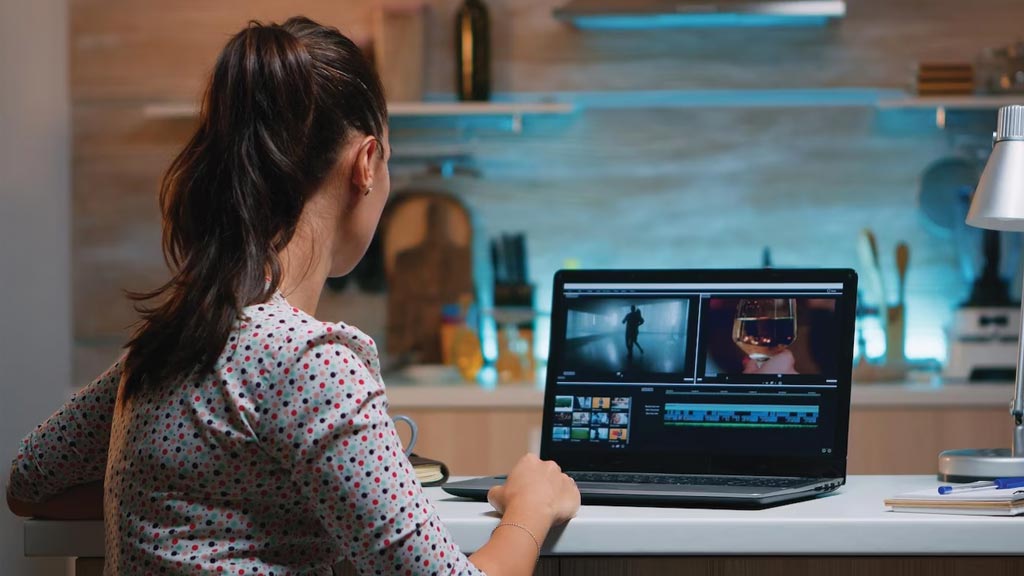- Free Estimates

In today’s digital age, almost everyone has a smartphone with a high-quality camera. Whether an aspiring filmmaker or a professional videographer, you can create cinematic footage with a smartphone. With the rise of social media and video-sharing platforms, creating stunning and visually captivating footage has never been more important. Whether you are creating content for your blog, social media channels, or corporate videos, capturing cinematic footage is a great way to tell your story in a visually engaging way.
In this article, we will explore the top tips and tricks from Hartford video production experts to help you shoot stunning cinematic footage using only your smartphone. So let’s dive right in!
To create cinematic footage that engages your audience, you need to understand the fundamentals of videography. The following tips and tricks will help you understand these principles and how to apply them to your smartphone cinematography.
The frame rate and shutter speed are essential aspects of videography. The frame rate refers to the number of frames captured per second, and the shutter speed refers to the duration that the camera’s shutter remains open. By adjusting these settings, you can create specific effects in your footage. For example, a high frame rate and fast shutter speed can create a slow-motion effect, while a low frame rate and slow shutter speed can create a blurry effect.
Framing and composition are critical elements in creating cinematic footage. Framing refers to the position of your camera, while composition refers to the arrangement of elements within your shot. To create visually engaging footage, you should consider the following:
Lighting is a crucial element of cinematic footage. Proper lighting can create a specific mood or atmosphere in your footage. When shooting with a smartphone, it’s essential to consider the lighting conditions and adjust your camera settings accordingly. Of course, natural lighting is always the best option, but if you shoot indoors, you must set up lighting equipment to create the right ambiance.
Sound is just as important as video when creating cinematic footage. To capture high-quality audio, consider the following:
Using a smartphone for cinematic footage has several advantages. Firstly, it’s cost-effective, as you don’t need to invest in expensive camera equipment. Secondly, it’s convenient, as you can shoot footage wherever you are without carrying heavy camera equipment. Finally, smartphones have advanced camera technology, allowing you to capture high-quality footage with just a few taps on your screen.

Pre-production planning is an essential step in creating cinematic footage. It involves everything from storyboarding to location scouting and lighting setup.
Storyboarding is creating a visual representation of your video before you start shooting. This will help you plan your shots and ensure your footage tells a compelling story.
Choosing the right location is crucial for creating cinematic footage. You should look for locations that have interesting features, such as beautiful landscapes, unique architecture, or interesting textures.
Lighting is one of the most important elements in creating cinematic footage. Of course, natural lighting is always the best option, but if you shoot indoors, you must set up lighting equipment to create the right ambiance.
Audio is just as important as video when creating cinematic footage. Here are some tips for capturing high-quality audio using only your smartphone.
External microphones can significantly improve the audio quality of your footage. Several options, such as lapel mics, shotgun mics, and directional microphones, can help you capture high-quality audio. Test your microphone before you start shooting to ensure it works correctly.
Recording ambient sound can add depth and richness to your footage. For example, if you are shooting a scene at the beach, you can capture the sound of waves crashing on the shore. This will help to transport your viewers to the location and make them feel like they are there with you.
Shooting techniques can help you create unique and visually stunning footage. Here are some techniques to consider:
Slow motion can create a sense of drama and tension in your footage. It’s also a great way to highlight specific details in your shot.
Time-lapse is a technique that involves capturing footage at a lower frame rate than usual, resulting in a fast-forwarded effect. It’s an excellent way to capture the passage of time, such as a sunset or a busy street.
Hyperlapse is a more advanced form of time-lapse that involves moving the camera while shooting. It creates a unique and dynamic effect that can be used to show a journey or a location change.

Editing your footage is an essential step in creating cinematic footage. Here are some tips to help you edit your footage like a pro.
Choosing the right editing app is crucial for creating cinematic footage. Several options are available, such as Adobe Premiere Rush, iMovie, and Kinemaster. Make sure to choose an app that has the features you need.
Color grading can create a specific mood or atmosphere in your footage. It involves adjusting the colors in your shot to create a more cinematic look.
Adding music and sound effects can create a more immersive experience for your viewers. Choose music and sound effects that complement your footage and enhance the mood you are trying to create.
Shooting cinematic footage with a smartphone is possible with the right skills and techniques. Pre-production planning, capturing high-quality audio, framing and composition, shooting techniques, and editing are all essential elements of creating cinematic footage. Following the tips and tricks from Hartford video production experts from Video Production Services, you can create stunning and visually captivating footage with a smartphone.